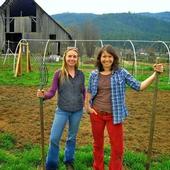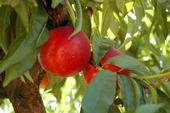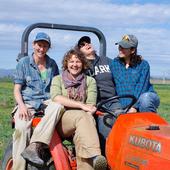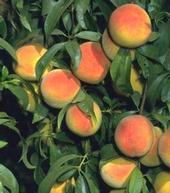- Author: Penny Leff

This time of year, most farmers don't get much sleep. Tomatoes, pears and peaches often ripen in the Sacramento Valley faster than the harvest crews can pick them, even working 12-hour days. But this is also the season that some farmers are happy to show off their farms to visitors, inviting guests to enjoy the delightful flavors and beauty of the harvest in a pause from the bustle. UC Cooperative Extension hosts an online agritourism directory and calendar, www.calagtour.org, to help Californians find farms and ranches to visit. Here are a few upcoming opportunities for summer fun on California farms, pulled from the calendar:
- Plumas County...
- Author: Diane Nelson

Can shorter peach and nectarine trees reduce labor costs?
The answer may be developing soon at a 4-acre test orchard south of Fresno, where University of California researchers are planting semi-dwarfing rootstocks as part of a large, integrated experiment on virtually every aspect of peach and nectarine production.
“We're designing ‘ladderless' orchards, which have the potential to cut labor costs by 50 percent or more and improve worker safety,” said UC Cooperative Extension specialist Ted DeJong, a plant physiology professor at UC Davis. DeJong and Kevin Day, a Cooperative Extension farm advisor in Tulare County, are leading the...
- Author: Penny Leff

Tomatoes grow fine in my Sacramento backyard. I can usually count on plenty of basil, more zucchini than the neighbors will take, some snow peas, chard and kale, a few small peppers and eggplants and whatever salad greens survive the slugs (in other words, lots of arugula). We have oranges and grapefruit, but I wouldn't even try to grow peaches or apricots. It takes a farmer to grow peaches. It takes a good farmer to grow good peaches. It takes a good farmer and good weather to grow Blenheim apricots.
Instead of planting a peach tree, I joined a fruit community supported agriculture (CSA) program, promising to pay $15 a week for a...
- Author: Penny Leff

Seeing the milky way clear and bright in the night sky wasn't anything special to Dinuba peach growers Nori and Mike Naylor, but they noticed that it was a simple treat enjoyed by visitors to their new farm stay in the organic orchard. So Nori is thinking about mentioning the stars on Twitter, or Facebook, or on her blog perhaps.
Mike Naylor has been growing peaches organically since 1984 on 95 acres he took over from his father. He sees a huge disconnect between people who grow food and the majority of people who no longer know anyone who farms or ranches. And he also sees that many of these people want to connect to the farm and want their children to have that connection. Since the Naylors were not using the four bedrooms in...
- Author: Jeannette E. Warnert

San Joaquin Valley farmer Mas Masumoto famously described the joys of fruit eating in the opening pages of his book Epitaph for a Peach. The prologue reads like a love letter to the old Sun Crest variety, planted years ago by his Japanese-American father. Sun Crest peaches are juicy and delicious but lack some commercial attributes.
On eating a fruit he calls a “treasure,” Masumoto wrote:
“You lean over the sink to make sure you don’t drip on yourself. Then you sink your teeth into the flesh . . . This is a real bite, a primal act, a magical sensory celebration announcing that summer has arrived.”
Many Californians can share Masumoto’s experience of lovingly caring for a fruit tree, patiently waiting...



